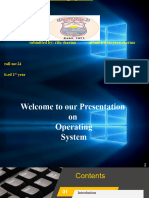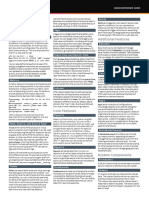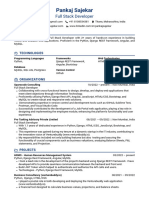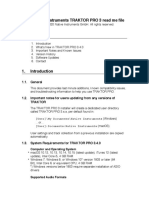Ministry of Higher Education and
Scientific Research
Al-Nahrain University - College of
Engineering
Department of Civil Engineering -
First Year
Evening Studies
Microsoft Windows
Operating System
:Prepared by
Abdullah Ahmed Abdulwahid
Supervised by:
Dr. Mohammed Munqith
� Introduction :
Microsoft Windows is one of the most widely used operating
systems for computers worldwide, developed by Microsoft
Corporation. It provides an integrated operating environment
that allows users to run programs, manage files, and interact
with various devices easily. Since its first release in 1985,
Windows has undergone numerous developments to become the
most commonly used system on personal and desktop
computers.
1
� History and Development of Windows :
The first version of Windows was released in 1985 as a
graphical interface for MS-DOS. Since then, the system has
evolved significantly to include modern features such as
graphical user interfaces, network support, cloud computing,
and artificial intelligence.
Key Windows Versions and Developments :
• Windows 1.0 (1985): The first version with a graphical
interface supporting windows and menus.
• Windows 95 (1995): Introduced the Start button and
taskbar, making system interaction more user-friendly.
• Windows XP (2001): One of the most popular versions,
known for its improved graphical interface and stable
performance.
• Windows 7 (2009): Improved security and performance,
still favored by some users today.
• Windows 10 (2015): Combined the experience of
Windows 7 and 8, with continuous security updates and
the integration of Cortana (digital assistant).
• Windows 11 (2021): Introduced a completely new
interface, support for Android applications, and enhanced
performance and security.
2
� Main Components of the Windows Operating System
Windows consists of several key components that facilitate its
use and management, including:
1. Graphical User Interface (GUI): Uses windows, icons,
menus, and buttons for easy interaction.
2. Taskbar: Contains the Start button, open applications, and
notifications.
3. File Explorer: Allows users to manage files and folders
easily.
4. Control Panel: Enables system and device settings
adjustments.
5. Microsoft Store: Provides official applications and tools
to enhance productivity.
Key Features of Windows :
1. Ease of Use :
• User-friendly graphical interface that is easy to navigate
and customize.
• Supports touch, stylus, and voice commands in modern
versions.
2. Wide Compatibility with Software and Hardware :
• Supports thousands of applications, including Microsoft
Office, web browsers, and games.
• Compatible with most devices, from desktops to tablets.
3. Security and Protection :
• Windows Defender: Built-in antivirus to protect against
malware.
• Firewall: Prevents unauthorized network access.
• Automatic security updates to ensure system protection.
4. Multitasking and Performance Management :
• Ability to run multiple programs simultaneously.
• Task Manager allows monitoring performance and
managing active processes.
3
� 5. Cloud Computing Support :
• Integration with OneDrive for file storage and access
from any device.
• Synchronization across multiple devices using a
Microsoft account.
6. Gaming and Multimedia Support :
• DirectX technology enhances gaming performance.
• Built-in media applications such as Windows Media
Player, Photos, and Movies & TV for multimedia
playback.
Uses of Windows :
1. Personal Use
• Web browsing, video streaming, and email
management.
• Using social media applications and office software.
2. Business and Office Work
• Running productivity applications like Microsoft Office
and Adobe Photoshop.
• Organizing online meetings through platforms like
Microsoft Teams and Zoom.
3. Education Sector
• Running e-learning applications and interactive tools.
• Supporting academic and research applications.
4. Gaming and Design
• DirectX and Game Mode provide high-quality gaming
experiences.
• Running 3D design software such as Autodesk 3ds Max
and Blender.
4
� Conclusion :
Microsoft Windows remains one of the most widely used
operating systems due to its powerful features and ease of use.
With each new release, Microsoft enhances performance,
security, and compatibility with the latest technologies. Thanks
to cloud computing support, artificial intelligence, and
multitasking capabilities, Windows continues to be the top
choice for millions of users worldwide.
























































































